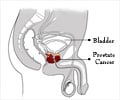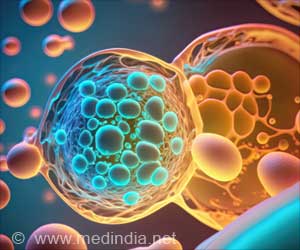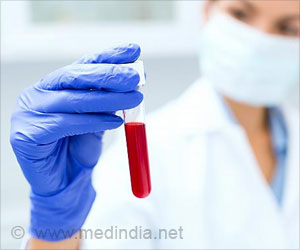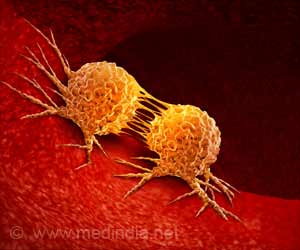A study conducted at the University of Minnesota has refuted the belief that cancer is more aggressive in black men.
A study conducted by lead investigator Akhouri Sinha, a Professor of genetics, cell biology, and development and research scientist at the University of Minnesota has refuted the belief that cancer is more aggressive in black men. No such evidence has come to light in a study of prostate cancer tumors from Caucasian and African-American men as the study has failed to match patients properly and used only indirect refute means to measure tumor aggressiveness. The work will be published in Anticancer Research Sept. 21 (vol. 27, issue 5A, pp. 3135-3142).
In previous studies of prostate tumors, those in black patients tended to be larger and at a more advanced stage, and black men had higher blood levels of prostate specific antigen (PSA), a substance produced by the prostate that, at high levels, points to the possibility of prostate cancer. But all these criteria are interrelated and could be the result of delayed diagnosis or medical care, Sinha said.“Previous studies showing differences in prostate cancers among races require re-evaluation because inconsistent criteria were used in selection of patients,” he said. “Our data shows that for patients receiving similar treatment, African-American patients are not following up with their doctors as opposed to Caucasians, and this difference is highly significant. Also, Caucasian patients are four times as likely to receive additional treatment after prostatectomy. Cancer does not discriminate on the basis of race, religion, national origin, or caste system, like people do. Invasiveness of prostate cancer is not race-dependent.”
According to Sinha, what is needed is a comparison of the innate aggressiveness of tumors that have been matched by criteria relevant to a diagnosis of cancer as well as treatment after prostatectomy.
Drawing on the resources of the Minneapolis Veterans Affairs Medical Center, Sinha selected preserved slices of tumors from 130 surgery patients. From these he was able to match 25 black and 25 white patients according to age, Gleason grade (a pathologist’s measure of how advanced a prostate tumor is), clinical stage of the tumors and PSA levels before prostatectomy.
To determine how aggressive the tumors were, Sinha measured the levels of an enzyme that is essential for destroying membranes that keep cells in place. Called cathepsin B, the enzyme, if unchecked, carves out an “escape route” by which cancer cells can spread. He also measured the levels of a substance, known as stefin A, that inhibits cathepsin B. The ratio of the two substances in slices of prostate tumors gives a measure of how invasive, or aggressive, the tumors are. The most aggressive ones are characterized by a high ratio of cathepsin B to stefin A.
Results showed that the ratios were not significantly different in tumors of black and white men, all of whom had Gleason score 6 or 7 tumors, indicating moderate risk. The average ratios were 1.78 in black men and 1.59 in white men for Gleason score 6 tumors, and 1.49 in black men and 1.35 in white men of Gleason score 7 tumors. All these ratios were higher than the average ratio in control tissue taken from men with benign prostatic hyperplasia, a common, noncancerous enlargement of the gland.
“Our selection of patients, who received equal medical care at the Minneapolis Veterans Affairs Medical Center, minimized differences in prostate cancer of African-American and Caucasian patients,” he said. “Furthermore, previous studies did not include [enzymes like cathepsin B] as a factor to distinguish between African-American and Caucasian men, and, therefore, did not provide clues as to the biological basis of invasiveness and progression of prostate cancer.” Sinha stressed that his results must be confirmed by more expansive studies.
GAN/C


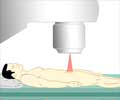

![Prostate Specific Antigen [PSA] Prostate Specific Antigen [PSA]](https://www.medindia.net/images/common/patientinfo/120_100/prostate-specific-antigen.jpg)

